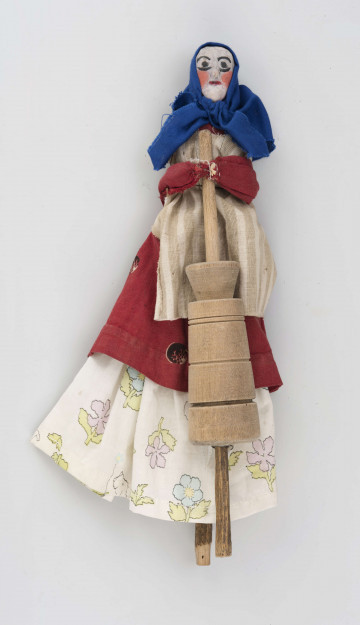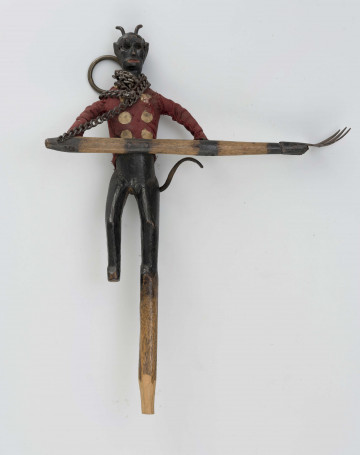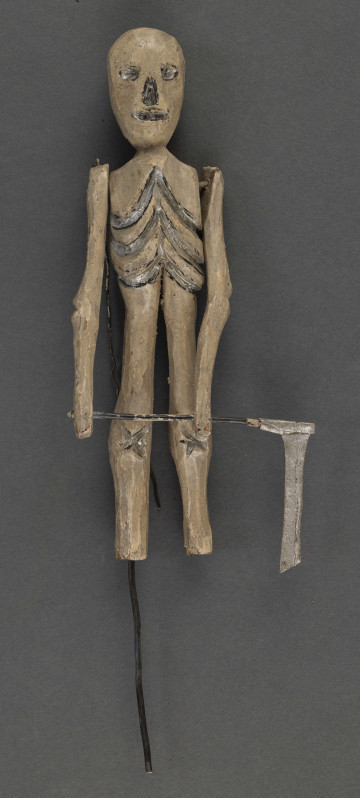
‘Witch’ puppet from the Nativity scene
1901 — 1920
National Museum in Lublin
Part of the collection: Folk craft of the Lublin Region (19th/20th c.)
The thin flake of bread, the wafer, is an important part of the Christmas tradition. The name comes from the Latin word oblatum (sacrificial gift). In the form we know today, it appeared at the turn of the 9th and 10th centuries in the French Benedictine abbey in Cluny. The custom of sharing it during a festive supper spread in Poland in the second half of the 18th century. At first, it was accepted in the homes of the nobility, from where it was taken over by villagers who developed various customs around it.
The wafer occupied the place of honour on the Christmas table. Its presence on an extra plate was supposed to symbolically connect with the souls of the dead, and breaking it with a loved one ensured an abundance of bread and happiness in the coming year. It was believed to strengthen the health of people and animals, which is why it was added to leftover dishes and given to farm animals. Wafers of different colours were used: yellow, red, green, and those in which holy herbs were baked. Wafers were also used to make decorations - elaborate spherical "worlds", often with a complicated structure, which were hung in the ceiling, on ceiling beams or were the most impressive decoration of Christmas tree lanterns and later Christmas trees.
In the past, a tool resembling large tongs was used to bake wafer - tongs ending in iron dies. These were called irons, and they were produced by craftsmen called iron workers. Usually their artistic sense and imagination determined the shape of the ornaments carved inside: religious symbols, scenes from the life of Christ, plant motifs. They were then imprinted on the surface of the wafer during the short, approximately three-minute baking process in the bread oven, after the dough with the consistency of thick cream made of white flour and water, without the addition of yeast or salt, had been poured onto one of the matrices and pressed down with the other. Initially, wafers were baked by monks but by the 15th century, it was also done by church servants in parishes.
Author / creator
Dimensions
cały obiekt: height: 62 cm
Object type
baking mold
Technique
forging
Material
iron
Creation time / dating
Creation / finding place
Owner
The National Museum in Lublin
Identification number
Location / status

1901 — 1920
National Museum in Lublin

1901 — 1920
National Museum in Lublin

1901 — 1920
National Museum in Lublin
DISCOVER this TOPIC
National Museum in Lublin
DISCOVER this PATH
Educational path